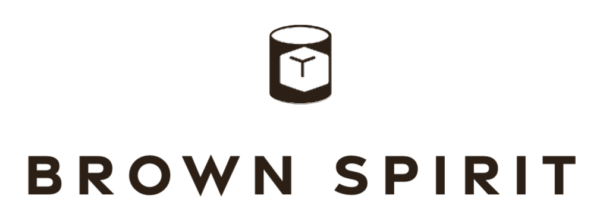Whisky Bottle Codes
If you've ever looked closely at a bottle of whisky, you may have noticed a series of numbers and codes. These codes and numbers serve a variety of purposes, and can provide valuable information about the whisky you're holding.
Laser codes on whisky bottles
In the world of whisky, aficionados often find themselves captivated not only by the rich flavors and aromas within the bottle but also by the intricate details on the packaging. One such detail that has piqued the curiosity of enthusiasts is the laser code on whisky bottles. These codes, often subtle and discreet, carry valuable information about the spirit within. Let's embark on a journey to decode the different types of laser codes found on whisky bottles and unravel the mysteries behind these hidden inscriptions.
Batch and Bottle Information: Laser codes often contain crucial details about the batch and bottle. These alphanumeric codes can reveal the production date, bottling date, and even the specific batch number. Connoisseurs appreciate this information as it allows them to trace the origins of the whisky and understand its aging process.
Authentication and Anti-Counterfeiting Measures: In an era where counterfeit spirits are a growing concern, laser codes serve as a powerful tool for authentication. Distilleries employ advanced laser technologies to engrave unique codes that are challenging to replicate. By verifying these codes, consumers can ensure the authenticity of the bottle, safeguarding themselves against subpar imitations.
Distillery Secrets and Storytelling: Some laser codes go beyond the practicalities of production and authentication. Distilleries often use these codes as a canvas to share their stories. Hidden within the laser-etched patterns may be nods to the distillery's history, symbols representing the whisky's character, or even cryptic messages for those keen enough to decipher them. It adds an extra layer of engagement for enthusiasts who appreciate the narrative woven into every bottle.
Barrel and Cask Information: Whisky aficionados understand the profound impact that barrels have on the final product. Laser codes can provide insights into the type of cask used, its origin, and sometimes even its history. This information allows enthusiasts to delve into the nuances of maturation, appreciating how the choice of wood contributes to the complex flavors of the whisky.
Limited Editions and Special Releases: For limited edition and special release whiskies, laser codes often play a pivotal role. These codes may include information on the exclusivity of the bottle, the total number of units produced, and the specific bottle number within the limited run. Collectors, in particular, find these details invaluable as they add rarity and uniqueness to their prized possessions.
In the world of whisky, the laser code on a bottle is more than just a series of numbers and letters; it's a portal to the spirit's journey from distillation to the moment it reaches your glass. As technology advances, so too will the sophistication of these codes, providing enthusiasts with even more detailed and intricate information. The next time you raise a glass of your favorite whisky, take a moment to appreciate the hidden messages etched onto the bottle, for they tell a story that extends far beyond the liquid within.
Whisky bottle label information
As you peruse the shelves of a whisky store, your eyes are drawn not just to the amber elixirs within the bottles, but also to the intricate labels that adorn them. Beneath the captivating designs and elegant typography lie hidden codes, symbols, and numbers that unveil a wealth of information about the spirit within. In this exploration, we embark on a journey to decode the cryptic language of whisky labels, revealing the secrets that producers inscribe on these seemingly straightforward surfaces.
Alcohol by Volume (ABV) and Proof: Among the most straightforward codes on whisky labels are the indications of alcohol content. The ABV (Alcohol by Volume) percentage and sometimes the proof provide a clear understanding of the spirit's strength. For aficionados, this information is crucial in gauging the intensity of the whisky experience.
Age Statements: Whisky labels often carry numerical codes indicating the age of the spirit. Whether it's a single-digit number or a combination of numerals, this code signifies the years the whisky has spent maturing in casks. The age statement is a key factor for enthusiasts seeking well-matured and nuanced expressions.
Distillation and Batch Numbers: Distilleries imprint labels with codes denoting the distillation or batch number. These figures allow enthusiasts to trace the whisky back to its production origin, providing insights into the specific distillation run or batch characteristics.
Cask Information: Some labels discreetly incorporate codes related to the casks used during maturation. Information about the type of wood, previous contents of the cask, or even the specific cask number may be included. This adds a layer of depth for connoisseurs interested in the impact of wood on flavor.
Distillery Codes: Whisky labels may feature codes or initials representing the distillery of origin. These codes, often familiar to seasoned enthusiasts, serve as a quick reference to the whisky's provenance and the unique qualities associated with a particular distillery.
Tasting Notes and Flavor Profiles: While not always presented as codes, descriptive terms on labels can be seen as a form of symbolic language. Expressions like "peaty," "fruity," or "spicy" act as shorthand for the flavor profile, guiding consumers toward whiskies that align with their taste preferences.
Special Edition Markings: Limited editions or special releases frequently showcase unique markings on their labels. Whether it's an embossed seal, a special emblem, or a unique font, these codes signal exclusivity and often denote a distinctive production or maturation process.
Geographic Indicators: Labels may feature symbols or names denoting the whisky's geographic origin. This could include references to specific regions, landmarks, or geographical characteristics that influence the spirit's flavor.
The labels on whisky bottles are more than decorative elements; they are a coded narrative waiting to be deciphered. The next time you hold a bottle in your hands, take a closer look at the numbers, symbols, and letters on the label. In doing so, you'll unravel the story of the whisky, gaining insights into its journey from distillation to maturation. The enigmatic language of whisky labels transforms each bottle into a treasure trove of information, making every pour a richer and more meaningful experience for enthusiasts around the world.
Glass bottle markings
Within the realm of whisky appreciation, the intrigue extends beyond the liquid itself to the very vessel that holds the spirit — the glass bottle. Distilleries, in collaboration with glass manufacturers, often incorporate specific codes and markings onto whisky bottles. These codes, like hidden signatures, offer insights into the production, origin, and unique characteristics of the whisky within. In this exploration, we unveil the secrets behind the different codes that glass bottle producers apply to whisky bottles.
Manufacturing Marks: Glass bottle manufacturers leave their own distinct marks on the bottles they produce. These can include symbols, letters, or numbers that indicate the manufacturing plant, mold identification, or other details about the bottle's creation. These marks are typically found on the base or heel of the bottle.
Date Codes: Some glass bottles carry date codes, a series of numbers or letters that signify the date of manufacture. These codes help identify the bottle's age, which can be particularly important for collectors or enthusiasts interested in the history of a particular release.
Mold Numbers: Glass molds used in the manufacturing process often leave identifiable numbers or codes on the bottle. These mold numbers serve as a reference for quality control and tracking purposes, ensuring consistency in the production of glass bottles.
Glassmaker's Marks: Glass manufacturers may have their own distinctive symbols or logos, indicating the origin of the glass. These marks can be artistic, and they contribute to the overall aesthetics of the bottle while signifying the craftsmanship and quality associated with a particular glassmaker.
Recycling Codes: In line with environmental considerations, some glass bottles feature recycling codes. These codes help consumers and recycling facilities identify the type of glass used in the bottle, facilitating the recycling process.
Embossed Lettering and Seals: Distilleries often collaborate with glass manufacturers to create custom embossed lettering or seals on bottles. These can include brand logos, distillery names, or other unique symbols that add a distinctive touch to the packaging.
Authentication Features: As counterfeiting concerns grow, glass bottle producers and distilleries may implement authentication features. These can range from special holograms to intricate patterns that are difficult to replicate, ensuring the integrity of the packaging and the whisky it contains.
The codes and markings on whisky bottles extend beyond mere aesthetics, weaving a narrative of craftsmanship, authenticity, and attention to detail. The next time you find yourself admiring a bottle of whisky, take a closer look at the glass itself. These hidden codes, like whispers of the production process, contribute to the overall mystique and identity of the spirit within. Whether it's a date code hinting at the bottle's age or a glassmaker's mark signifying quality, each code adds a layer of significance to the whisky experience.
Tax stamp markings
As enthusiasts explore the world of whisky, their attention often extends beyond the liquid within the bottle to the intricate details of the packaging. Among these details, tax stamps emerge as a crucial component, not only signifying compliance with regulations but also carrying a unique set of codes that unveil a wealth of information. In this exploration, we delve into the global language of whisky tax stamps, deciphering the codes that tell the story of the spirit's journey from distillery to shelf.
Government Authentication: Tax stamps on whisky bottles serve as a crucial mechanism for governments to authenticate the legality of the product. These stamps are often adorned with unique codes, which can include alphanumeric sequences, QR codes, or barcodes. These codes provide a digital signature, allowing authorities and consumers to verify the authenticity of the product.
Country of Origin Indicators: The codes on tax stamps frequently include elements that indicate the country of origin. This can be achieved through numeric or alphabetic symbols, color schemes, or national emblems. The presence of such codes ensures transparency and helps consumers identify the whisky's provenance.
Excise Duty Information: Whisky tax stamps carry codes related to excise duties, a significant component of the cost structure for distilled spirits. These codes may be numeric and correspond to specific duty rates, helping both producers and consumers understand the financial implications of the bottle's contents.
Production Date and Batch Information: Some tax stamps incorporate codes that reveal information about the production date or the specific batch of whisky. This allows enthusiasts to trace the origins of their bottle, offering insights into the age and production details of the spirit.
Anti-Counterfeiting Measures: In the face of counterfeiting challenges, tax authorities and distilleries collaborate to implement sophisticated anti-counterfeiting features within the tax stamps. These can include holographic elements, special inks, or microprinting, adding an extra layer of security to protect against fraudulent activities.
Importer and Distributor Identification: Codes on tax stamps may also include information about the importer or distributor responsible for bringing the whisky into a particular market. This ensures that the distribution chain is transparent, and relevant parties can be held accountable for regulatory compliance.
Regulatory Compliance Markings: Tax stamps often bear regulatory compliance markings that indicate adherence to specific quality and safety standards. These codes reassure consumers that the whisky has passed rigorous inspections and meets the legal requirements for sale.
While tax stamps on whisky bottles may appear as mere bureaucratic necessities, the codes they bear tell a fascinating story of a spirit's global journey. From the country of origin to excise duty rates, production details, and anti-counterfeiting measures, these codes play a crucial role in ensuring the integrity, authenticity, and quality of the whisky within. As you peel back the layers of a tax stamp, you unveil not just a legal seal but a coded narrative that enriches the appreciation of the whisky it protects.


